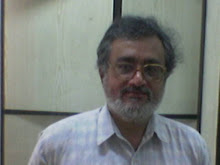Former Indian High Commissioner to UK Shri L.M.Singhvi, who passed away a few days ago, was paid a rich tribute in an orbituary by Sudheendra Kulkarni in Indian Express online edition of 14.10.07, titling it "A Saraswati Putra who built many Sethus". Incidentally, it was Vajpayee who called him Saraswati Putra in condoling his demise.
I quote from Kulkarni's orbituary, which illuminates the depth of the word Sethu in the consciousness of India's culture:
Quote: To present a glimpse of his greatness, let me cite a small excerpt from his 1996 speech at Stanford University, titled ‘Building Bridges for India through a Global Indogenic Movement’. The term ‘Sethu’ is very much in discussion these days because of the controversy over ‘Ram Sethu’. But look at the profound sense that Dr Singhvi mined from the word.
"Sethu represents a very meaningful metaphor in the treasure chest of India’s heritage. Even at the risk of sounding archival, I would like to share with you an adage in Sanskrit, which illumines the functional-teleological range and rationale of building Sethus: Sethubandhanam Sarvaranjanam; Sethubandhanam Margasadhanam; Sethubandhanam Snehakaranam; Sethubandhanam Vihita-taram; Sadabhavyam Sadadivyam; Sadasatyam Sanatanam (May bridges be built to secure welfare and happiness of all; to blaze new trails and facilitate passages; for the cause of affection among individuals and groups and for goodwill among nations and peoples; for salvaging that which matters; let this Sethu ever be magnificent and always graced by divine purpose; let it always represent the eternal truths enshrined in the enduring and universal vision of India.)” Unquote



No comments:
Post a Comment